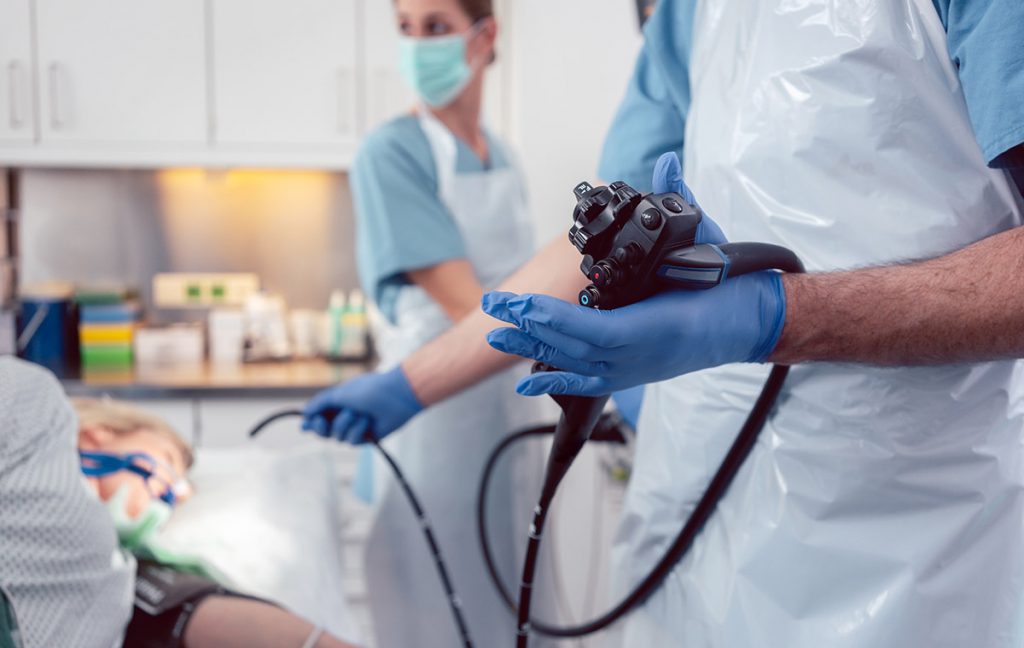
What to know about a stomach tissue biopsy
A gastric tissue biopsy and culture, also called a stomach biopsy, is a procedure used to diagnose a range of conditions, including stomach ulcers.
The biopsy involves removing a sample of stomach tissue. This sample is sent to a lab, where scientists test it for the presence of bacteria and other organisms that can cause harm.
These tests involve placing the stomach tissue on a tray called a petri dish and determining whether certain types of bacteria grow on the tissue.
An abnormal result could indicate that a person has a condition, such as a bacterial infection, inflammation, or stomach cancer. Normal results mean that there are no immediate signs of issues.
In this article, we explore the procedures and their results. We also describe what to expect after a gastric tissue biopsy and culture.

When a person is experiencing abdominal pain, weight loss, or unusual changes in stool, a doctor may order a gastric tissue biopsy and culture to help determine the cause of these symptoms.
During the biopsy, a doctor takes a sample of stomach tissue and tests it for signs of infection. They usually test for Helicobacter pylori (H. pylori) bacteria which are a common cause of stomach ulcers and digestive problems. A doctor may also test the tissue for cancer.
If a doctor has not detected the cause of a stomach problem after an initial physical exam, breath test, or blood test, they may order a gastric tissue biopsy and culture.
They order the biopsy and culture if a person has one or more of the following symptoms:
- black stools
- a lack of appetite
- pain or discomfort in the stomach
- nausea
- vomiting
- unexpected weight loss
A gastric tissue biopsy involves a procedure called an endoscopy. It involves a doctor inserting a thin, flexible tube with a light and camera at the end through the mouth, into the stomach, and sometimes into the upper intestine.
Attached to the endoscope is a small instrument used to collect a sample of tissue from the lining of the stomach or upper intestine.
After the procedure, a doctor will place the sample into a petri dish. If any bacteria are present, they will grow in the dish and can be identified by a medical professional, who will also look for signs of cancer and inflammation.
How to prepare for a gastric tissue biopsy
Always follow the doctor’s instructions about what to do before the biopsy. Typically they will ask that a person avoids eating and drinking for 12 hours before the test.
They may also recommend that a person stops taking certain medications, such as blood thinners, before the procedure. However, never stop taking a prescribed medication without first discussing it with a doctor.
What to expect during a gastric biopsy
Immediately before the biopsy, a person will remove any loose-fitting dentures or dental work.
A nurse will usually supply intravenous pain medication, a sedative, and a mouth guard to protect both the person’s teeth and the endoscope. They may also apply localized anesthetic around the mouth to prevent coughing or gagging.
Once prepared, the person will lie on their side. The doctor will insert the endoscope into their mouth, down the food pipe, and into the stomach. They will pump small amounts of air alongside the endoscope to expand the area, which allows the doctor to see the tissue better.
The doctor will look for areas that appear abnormal and collect one or more samples of tissue.
The endoscopy lasts for about 5–20 minutes. The samples are sent directly to a laboratory for examination.
Recovery time
The recovery time is relatively quick. A person will often return home the same day.
Immediately after the procedure, a person may experience bloating and gas because of the air pumped into the stomach and esophagus. Gas and pressure generally pass quickly.
A person may also feel a slight soreness in the throat. A doctor will advise against eating or drinking until the gag reflex returns.
The doctor will receive and analyze the results of the gastric biopsy, then explain the results in a follow-up appointment.
How long do results take?
Times vary, depending on the laboratory and the extent of testing needed. For a typical biopsy, results are often returned within 2–3 days.
If the sample needs more extensive testing, results could take 7–10 days. Ask the doctor for an estimate of how long results will take.
Interpreting results
Results are grouped into two categories: normal and abnormal.
The lab returns normal results when the sample shows no:
- signs of infection
- damage to cells
- H. pylori bacteria
- signs of cancer
- other abnormalities, such as ulcers or gastritis
The lab returns abnormal results when the samples indicate a problem.
Common issues include:
- H. pylori bacterial infection
- gastric cancer
- swollen and inflamed stomach lining, known as gastritis
The doctor will explain the results in a follow-up appointment. If the results are normal, the doctor may recommend further testing to determine the cause of the symptoms.
If the results are abnormal, the doctor will recommend a treatment plan.
